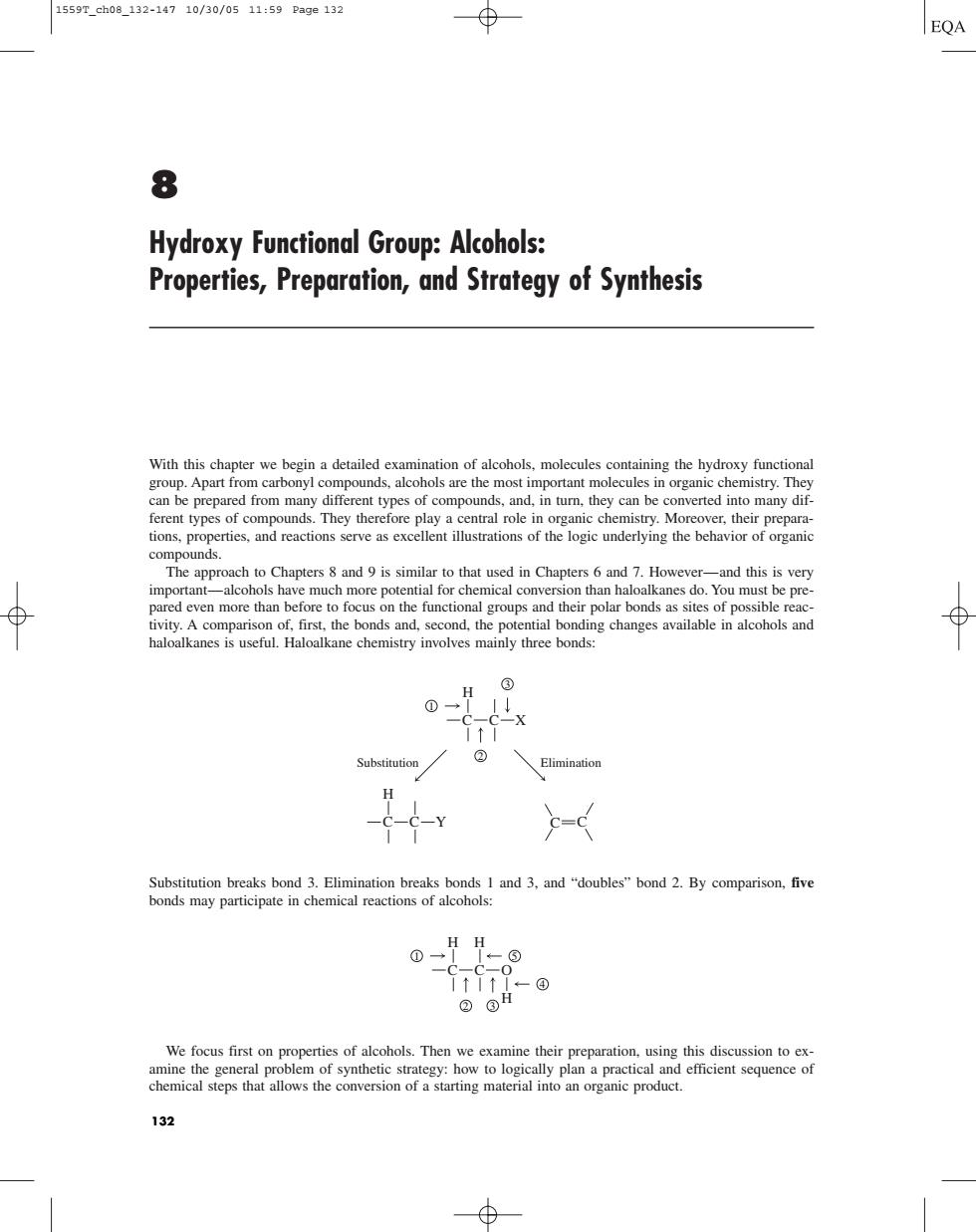正在加载图片...

1559T_ch08_132-14710/30/0511:59Pa9e132 EQA 8 Hydroxy Functional Group:Alcohols: Properties,Preparation,and Strategy of Synthesis an be prepared from m inerent types or compound nd,in tum they can be co compounds. n ocn me an boeec 11-x Substitution e-c Substitution breaks bond 3.Elimination breaks bonds 1 and 3.and"doubles"bond 2.By comparison.five bonds may participate in chemical reactions of alcohols: -4- amine the general prablem of synthene we cy We focus first on e this discussion to ex and efficient sequence of rting material into an organic product 鸟 8 Hydroxy Functional Group: Alcohols: Properties, Preparation, and Strategy of Synthesis With this chapter we begin a detailed examination of alcohols, molecules containing the hydroxy functional group. Apart from carbonyl compounds, alcohols are the most important molecules in organic chemistry. They can be prepared from many different types of compounds, and, in turn, they can be converted into many different types of compounds. They therefore play a central role in organic chemistry. Moreover, their preparations, properties, and reactions serve as excellent illustrations of the logic underlying the behavior of organic compounds. The approach to Chapters 8 and 9 is similar to that used in Chapters 6 and 7. However—and this is very important—alcohols have much more potential for chemical conversion than haloalkanes do. You must be prepared even more than before to focus on the functional groups and their polar bonds as sites of possible reactivity. A comparison of, first, the bonds and, second, the potential bonding changes available in alcohols and haloalkanes is useful. Haloalkane chemistry involves mainly three bonds: Substitution breaks bond 3. Elimination breaks bonds 1 and 3, and “doubles” bond 2. By comparison, five bonds may participate in chemical reactions of alcohols: We focus first on properties of alcohols. Then we examine their preparation, using this discussion to examine the general problem of synthetic strategy: how to logically plan a practical and efficient sequence of chemical steps that allows the conversion of a starting material into an organic product. H H H C C O 1 2 3 5 4 H C C X H C C Y C C 1 2 3 Substitution Elimination 132 1559T_ch08_132-147 10/30/05 11:59 Page 132